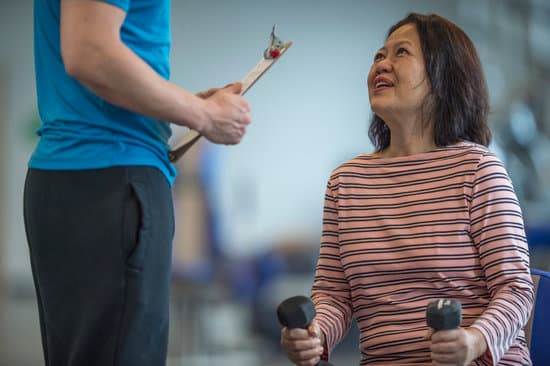Fitting exercise boots for horses is an essential aspect of equine care and performance. In this article, we will delve into the importance of ensuring that exercise boots fit properly on a horse’s leg to provide protection and support during physical activity.
We will explore the anatomy of a horse’s leg and how it influences the fit of exercise boots, as well as discuss the different types of exercise boots available and how to measure a horse’s leg for the right fit.
Understanding the significance of properly fitting exercise boots is crucial for horse owners and riders alike. The right fit can help prevent injuries, provide support during strenuous activities, and contribute to the overall health and well-being of the horse. By exploring the various aspects of fitting exercise boots, readers will gain valuable insight into how to care for their horse’s legs effectively.
Throughout this article, we will cover step-by-step guides on measuring a horse’s leg for the right size, selecting the correct size based on measurements, putting on the boots without causing discomfort to the horse, checking for proper fit, and maintaining and caring for exercise boots. By understanding these key elements, readers can ensure that their horses are properly equipped with exercise boots that enhance their performance and promote their well-being.
Anatomy of a Horse’s Leg
When it comes to fitting exercise boots for horses, understanding the anatomy of a horse’s leg is crucial. The structure of a horse’s leg directly impacts the fit of the exercise boots and can determine the level of support and protection they provide. Here is a closer look at how different parts of a horse’s leg can impact the fit of exercise boots:
- Proper Fit around the Fetlock: The fetlock joint is one of the most important areas to consider when fitting exercise boots. It’s essential that the boot fits snugly around this joint without being too tight or too loose. A well-fitting boot will provide support to the fetlock while allowing for natural movement.
- Sizing for Cannon Bone: The cannon bone, located between the knee or hock and fetlock, also plays a significant role in determining the fit of exercise boots. Understanding the circumference and length of this area is important for selecting an appropriate size that won’t cause discomfort or restrict movement.
- Impact on Tendons and Ligaments: Exercise boots are designed to provide support to tendons and ligaments during physical activity. Properly fitting boots will offer targeted support in these areas without putting excessive pressure on them, minimizing the risk of injury.
Ultimately, having a good understanding of how each part of a horse’s leg impacts the fit of exercise boots will help ensure that you select the right type and size for your equine companion.
When figuring out how to fit horse exercise boots, it is important to take into consideration not only accurate measurements but also how they correspond with each part of the leg’s anatomy. By carefully measuring your horse’s legs and understanding their structure, you can make informed decisions when choosing exercise boots that provide optimum protection and comfort during workouts.
Types of Exercise Boots
When it comes to protecting a horse’s legs during exercise, there are various types of exercise boots to choose from. Each type is designed for specific purposes and offers unique features that set them apart. It’s important to understand the differences between the options available to ensure you select the most suitable boots for your horse’s needs.
Here are some of the most common types of exercise boots:
- Polo Wraps: These are long, stretchy bandages that are wrapped around the horse’s legs for protection. They offer support and cushioning, making them popular for light exercise and training sessions.
- Splint Boots: These boots are designed to protect the splint bone area on the inside of the horse’s leg. They typically have a hard outer shell for impact protection and soft inner lining for comfort.
- Open-Front Boots: These boots provide protection to the front of the horse’s legs without covering the front tendons. They are commonly used in show jumping to prevent interference while allowing freedom of movement.
- Bell Boots: These boots cover the horse’s hooves and are designed to protect against overreaching injuries. They come in various styles, including basic rubber bell boots and more advanced options with additional features.
It’s essential to consider your horse’s specific needs and the type of exercise or activity they will be performing when choosing the right boots. Whether you’re looking for basic protection, impact resistance, or specific tendon support, there is a type of exercise boot that will meet your requirements.
When selecting exercise boots for your horse, consider factors such as material, fit adjustability, breathability, and ease of maintenance. Understanding the differences between each type will help you make an informed decision on which option best suits your horse’s needs.
Measuring a Horse’s Leg
When it comes to fitting exercise boots for horses, getting the right measurements is crucial for ensuring a proper fit. Ill-fitting boots can cause discomfort and even injury to the horse, so it’s important to take accurate measurements before purchasing any type of exercise boots for your equine companion.
To start, it’s essential to understand the anatomy of a horse’s leg in order to measure it correctly. The circumference and length of the cannon bone, fetlock joint, and pastern are key areas that need to be measured. Using a soft measuring tape, gently wrap it around each of these areas and take note of the measurements. It’s important to measure both front and back legs as they may differ in size.
Once you have these measurements, refer to the sizing charts provided by the manufacturer of the exercise boots you are interested in. Each brand may have different sizing guidelines, so it’s crucial to follow their specific recommendations for a proper fit.
Keep in mind that some boots may require additional measurements such as the width of the leg or heel to ensure a snug fit. Implementing these steps will help guarantee that you find boots that will provide adequate protection without causing discomfort or restriction for your horse.
| Horse Leg Area | Measurement (In Inches) |
|---|---|
| Cannon Bone | 14″ |
| Fetlock Joint | 10″ |
| Pastern | 8″ |
Choosing the Right Size
When it comes to fitting exercise boots for horses, selecting the correct size is crucial for the comfort and safety of the animal. The right size will ensure that the boots provide adequate protection without causing any discomfort or hindering movement. To achieve this, it is essential to follow a few key tips on selecting the correct size of exercise boots based on measurements.
Firstly, it’s important to accurately measure the horse’s leg before choosing the size of exercise boots. This can be done by using a flexible tape measure to get the circumference of the cannon bone and height of the fetlock joint. These measurements will serve as a guide in determining which size would best suit the horse.
Once you have obtained accurate measurements, refer to the manufacturer’s sizing chart for their range of exercise boots. Different brands may have slight variations in their sizing, so it’s crucial to follow their specific guidelines when choosing the right size. It’s also recommended to take note of any customer reviews or feedback regarding sizing accuracy for a particular brand.
In addition, considering any unique features or specifications about your horse’s legs can also help in making a more informed decision when selecting the correct size. For example, if your horse has particularly wide or slender legs, some brands may offer specific options that cater to these variations.
By taking into account all these factors, you can ensure that you are choosing the right size of exercise boots for your horse and providing them with optimal comfort and protection during exercise.
Putting on the Boots
Putting on exercise boots for your horse is an essential part of their care and can greatly impact their comfort and performance. It is important to ensure that the boots are not only the right size but also put on properly to avoid any discomfort or injury to the horse. Here, we will provide a guide on how to fit horse exercise boots without causing any discomfort.
When putting on exercise boots, it is crucial to make sure that the boots are clean and free from any debris that could cause irritation to the horse’s legs. Additionally, checking the condition of the boots for any signs of wear and tear is important to prevent potential injury.
To fit horse exercise boots properly, start by carefully placing the boot around the horse’s leg, making sure that it sits evenly and securely without being too tight or too loose. It is essential to fasten any straps or closures according to the manufacturer’s instructions, ensuring a snug fit without constricting the leg.
Once the exercise boots are in place, observe your horse’s movement and behavior to ensure that they are not experiencing any discomfort. It is important to walk your horse around for a few minutes before engaging in any physical activity to allow them to adjust to wearing the boots.
| Step | Description |
|---|---|
| Clean The Boots | Ensure that there is no debris or dirt inside or outside of the boot that could cause irritation. |
| Proper Placement | Place the boot evenly around the horse’s leg, ensuring it sits securely without being too tight or too loose. |
| Fasten Straps/Closures | Follow the manufacturer’s instructions for securing straps or closures for a snug but comfortable fit. |
Checking for Fit
When it comes to ensuring the proper fit of exercise boots for your horse, it’s important to take the time to check for fit before actually using them. Ill-fitting boots can cause discomfort and even injury to your horse, so it’s crucial to make sure they fit properly and securely. Here are some steps to ensure that the exercise boots fit just right:
Check for Snugness
Before using the exercise boots, make sure they are snug but not too tight on your horse’s legs. You should be able to slide a finger between the boot and your horse’s leg without difficulty. If the boots are too tight, they can restrict circulation and cause discomfort.
Ensure Proper Alignment
The exercise boots should align properly with your horse’s legs. Check that there is no twisting or sliding of the boots when your horse moves. The correct alignment will provide the necessary support and protection to your horse’s legs during exercise.
Observe Your Horse’s Movement
Once you’ve put the exercise boots on, observe how your horse moves in them. Pay attention to any signs of discomfort or resistance during movement. Your horse should move freely and comfortably with the exercise boots on.
By following these steps on checking for fit, you can ensure that the exercise boots fit properly and securely before use, providing the necessary support and protection for your horse during exercise. Remember that a proper fit is essential for maintaining your horse’s health and performance during physical activity.
Maintaining and Caring for Exercise Boots
Exercise boots are an essential piece of equipment for horses, providing protection and support during workouts and competitions. However, in order to ensure their effectiveness and longevity, it is important to properly maintain and care for these boots. By following a few simple tips, you can keep your horse’s exercise boots in good condition for long-term use.
Clean the Boots Regularly
After each use, make sure to clean the exercise boots thoroughly. Remove any dirt, sweat, or debris that may have accumulated on the boots during the workout. Use a soft brush or cloth to gently scrub away any residue. Additionally, be sure to clean the inside of the boots to remove any sweat or moisture that could cause odors or discomfort for your horse.
Inspect for Wear and Tear
Regularly inspect your horse’s exercise boots for any signs of wear and tear. Look for areas that may be fraying, tearing, or losing their shape. If you notice any damage, it is important to address it promptly to prevent further deterioration and ensure the continued protection of your horse’s legs during exercise.
Proper Storage
When not in use, store the exercise boots in a clean and dry environment. Avoid leaving them exposed to direct sunlight or extreme temperatures, as this can cause damage to the material over time. Proper storage will help prolong the life of the boots and maintain their structural integrity.
By following these maintenance tips, you can help ensure that your horse’s exercise boots remain in good condition for long-term use. Taking care of this essential piece of equipment will not only protect your horse’s legs during workouts but also save you money by avoiding frequent replacements due to neglect or improper maintenance.
Conclusion
In conclusion, it is crucial to understand the significance of properly fitting exercise boots for horses. The anatomy of a horse’s leg plays a critical role in determining the fit of these boots, and there are various types available, each with unique features.
Measuring a horse’s leg accurately and choosing the right size based on these measurements is essential in ensuring the comfort and well-being of the animal. Additionally, putting on the boots correctly and checking for proper fit before use are necessary steps to avoid any discomfort or potential injury.
By following the guidelines provided on how to fit horse exercise boots, horse owners can ensure that their animals are equipped with the appropriate gear for optimal performance and protection. It is important to remember that maintaining and caring for exercise boots is also vital in prolonging their lifespan and effectiveness in safeguarding a horse’s legs during physical activities.
Ultimately, investing time and effort into understanding how to fit horse exercise boots will contribute to not only the overall well-being of the animal but also its performance in various activities such as training, competition, or leisurely riding. Properly fitted exercise boots will provide support and protection for a horse’s legs, allowing them to move comfortably and confidently.
Therefore, it is imperative for every horse owner or caretaker to prioritize this aspect of equine care for the benefit of their beloved animals.
Frequently Asked Questions
How Do You Fit a Horse Boot?
Fitting a horse boot involves measuring the horse’s leg to find the right size and then ensuring a snug but not too tight fit. It’s important to follow the manufacturer’s guidelines for proper fitting and fastening to prevent injury or discomfort for the horse.
How Tight Should Horse Sport Boots Be?
Horse sport boots should be snug enough to stay in place during exercise, without being too tight and restricting blood flow or causing discomfort. It’s important to check for any rubbing or irritation during and after use, as this can indicate that the boots may be too tight.
How Do You Fit Horse Tendon Boots?
When fitting horse tendon boots, it’s crucial to ensure that the boot is positioned correctly on the horse’s leg. The top of the boot should sit just below the knee or hock joint, and the straps should be fastened securely but not so tight that they restrict movement or cause chafing.
Regularly checking for signs of irritation or discomfort will help ensure a proper fit for the horse.

Passionate about providing useful information to anyone with an interest in the field of Personal Training, I strive to pass on to our readers quality information and to answer any questions about Personal Trainers, the work they do and how to become one.





